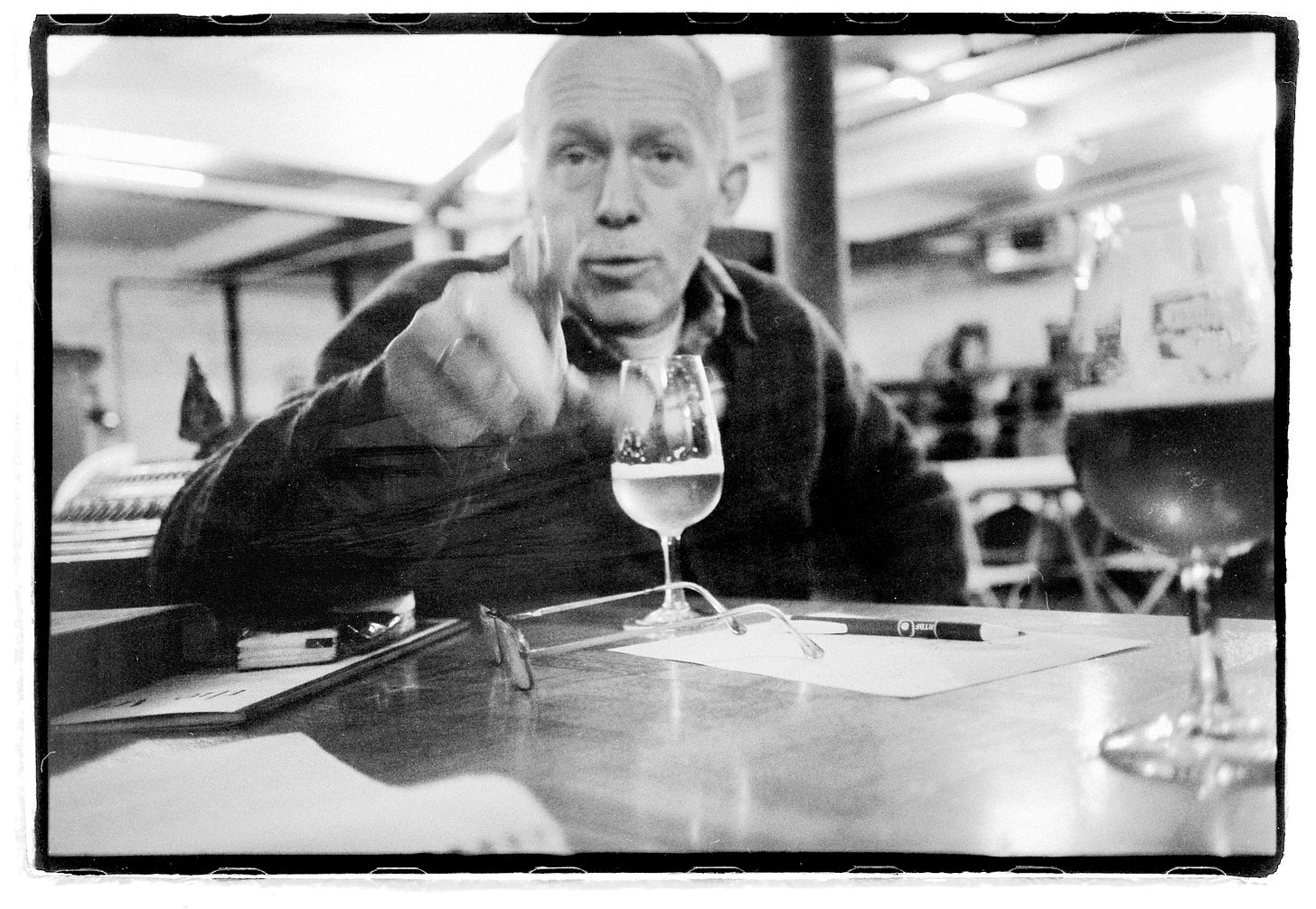Primordial Beer
A Portrait of Cantillon, the Great Brewer of Lambic, in Brussels
[Belgium is the greatest brewing country, not least for having continued to brew centuries-old styles of beer. This profile of Cantillon, one of my lost pieces, was part of a longer article about Belgian beer that appeared in the small run of the print magazine in the spring of 2001. Cantillon was then the only brewery left in Brussels. Now thanks to a surge of microbreweries, there are about 20, although at Cantillon not much has changed.]
1. You may not love the taste
In the central Brussels neighborhood of Anderlecht, in a characterless section of old and new buildings and vacant space left from demolition, the small Cantillon brewery sits across from a big parking lot. Cantillon is as purely traditional as any brewery in Belgium, and it is the only one left in Brussels. Its beer is the curious, tart, and, in its basic form, flat local specialty called lambic in French or lambiek in Flemish (pronounced lahm-BEEK, with the m sounded clearly in Flemish and hardly at all in French). Lambic is fermented wholly by wild yeasts that enter the rich liquid — from cooking grain in water — while it passes one night exposed in an attic. Cantillon beer comes in big, dark, heavy bottles sealed with a cork held in place by an oversized bottle cap covered in turn with a foil capsule. The bottom of the bottle holds a light sediment; you have to pour steadily and stop when the lees appear in the neck. The color of the beer is golden. Plain lambic is flat, like the beer peasants drink in a Bruegel painting, but the blend of young and old lambic called gueuze has fizz. Then the fragile head can be big. The taste of this traditional lambic or gueuze is completely dry, green-apple sharp with acidity, and a little bitter. From my first too-cold sip in the mostly unheated brewery on a January day, I liked it. The untampered-with quality in fact elated me.





